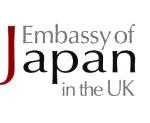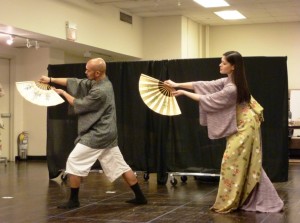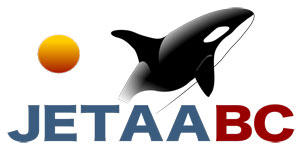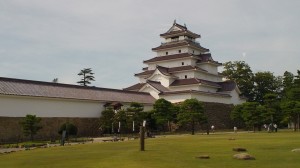Embassy of Japan in the UK Webmagazine (February 2012)
Embassy of Japan in the UK Webmagazine round-up. Posted by JET alum and current editor of the webmagazine, Dipika Soni (Ishikawa-ken, 2003-06). To subscribe to the Embassy of Japan’s monthly webmagazine, email webmagazine@ld.mofa.go.jp with the subject ‘subscribe’.
——————————————————————————————————————————–

Embassy of Japan in the UK Webmagazine: February 2012
Ambassador’s blog
My visit to Fukushima
Featured article
JAPAN: International Fashion Showcase 2012
Other articles:
Films at the Embassy of Japan: The Glass Cape
Manga Jiman 2011 Competition Results
Wasabi and chocolate?! An interview with William Curley
Tatsumi – A new film by Eric Khoo
Olympic Judo Champion Maki Tsukada to appear at HYPER JAPAN!
One Year After the Great East Japan Earthquake
JET Alum Lee-Sean Huang’s article in Fast Co.Exist on social innovation in Brazil
JET alum and JETwit webmaster Lee-Sean Huang (Oita-ken, Nakatsu-shi, 2003-2006) has published a new article about Social Innovation in Brazil. Lee-Sean is a member of JETAA New York, but is currently working in Brazil for a few months. He credits his JET experience as an invaluable resource for his current field of design for social innovation, where he works with cross-cultural communities to create social, cultural, and civic value.
Here is a preview of the article:
Brazil is known for its supermodels, but what about its social innovation models? Besides the economic boom, the country is finding a new groove in the field of digital collaboration and activism.
Last year, I moved from New York to Rio de Janeiro, where Purpose has opened its first overseas office. I have met with local innovators and interacted with all kinds of people on the streets, at the beach, and in botequins (informal bars). These experiences have all enriched my work in social innovation. Besides stimulating my creativity, immersion in a different culture and working in a foreign language have heightened my sense of mindfulness and empathy, reminded me of the virtue of humility, and taught me a few things about what it means to innovate.
Read the rest of the article at Fast Co.Exist.
How has your JET experience helped open doors to other cultures (besides your home culture and Japanese culture)? Are there any other JET alumni out there living in Brazil? Any other JET alumni working in the field of social innovation? Drop us a line in the comments, we would love to hear from you.
By Preston Hatfield (Yamanashi-ken, 2009-10) for JQ magazine. Preston moved from San Francisco to New York City in January 2012 and is now accepting submissions from people who want to be his friend. Abduct him from his house in the middle of the night, or find him on Facebook and ask about his JET blog in which he details his exploits and misadventures in that crazy Land of the Rising Sun we all love.
The Bennett Media Studio in New York’s West Village was filled to capacity on Feb. 11 for Saturday’s Lunar New Year Celebration and Fashion Show. This event, hosted by the ASIANinNY networking organization, treated guests to a night of Asian-oriented exhibitions, highlighted by two fashion shows and an energetic performance by cosplay singer and Japanese idol Reni Mimura.
The boys took the stage first, modeling clothes by designer Ninh Nguyen and eliciting a number of lascivious hoots and catcalls from an appreciative crowd, and the girls, wearing Meiling Chen’s new line, came out to a barrage of camera flashes. Fitting with the Year of the Dragon, the models’ hair, stylized by a team from Haruo Noro Salon, exhibited a quiet ferocity and mystique.
“For [the girls] the look is a simple and romantic boho style, center part, with a low ponytail and a braid. For [the boys] the look is a ’60s mod, edgy/punk, with a modern and clean feel,” lead stylist Noro said of his artistic intent. Having worked and studied in salons in Japan and London before coming to New Jersey and establishing his own business, Noro explained that for this event he drew mostly from his Japanese training, though having additional training and work with other cultures and participating in various fashion shows has enhanced his creative vision.
“I love that ASIANinNY is able to feature and promote various Asian designers, and my team and I are very happy to be part of it,” he said.
Justin’s Japan: Cosplay Idol Reni Mimura, Haruo Noro Salon Headline NY Lunar New Year Fest Feb. 11
By JQ magazine editor Justin Tedaldi (CIR Kobe-shi, 2001-02) for Examiner.com. Visit his Japanese culture page here for related stories.
Cosplay singer Reni Mimura and Japanese stylists from Haruo Noro Salon will appear at AsianInNY‘s annual Lunar New Year Celebration and Fashion Show on Feb. 11 at Bennett Media Studio, 723 Washington Street in Manhattan’s West Village at 7 p.m.
New York’s premier online destination for multicultural networking and entertainment, AsianInNY’s Year of the Dragon celebration is in time with the New York Fashion Week. Many outstanding Asian designers will present their new collections with runway fashion shows along with an exciting line-up of comedy, music, dance, and martial arts. Models will rock tresses and looks with amazing hair and make-up provided by Haruo Noro Salon.
Reni Mimura specializes in Moe style performances, a genre that emphasizes the cute look of Japanese pop-culture with the hip appeal of Japanese animation. She released her first Japanese CD in 2006 and relocated to New York in 2008. In 2009, she was invited as a guest performer to Japan Society, Otakon, New York Anime Festival and Anime Boston, and is quickly winning over the hearts of many new local fans, thanks to her pretty stage costumes, upbeat personality, and her unique singing talent.
For the complete story, click here.
Why Japan does not celebrate the Lunar New Year to the extent of its Asian neighbors
By Jessica Kennett Cork (CIR, 1997-2000, Hiroshima-ken)
With the large number of Asians in the U.S., it was hard to overlook the fact that the Year of the Dragon by the lunar calendar began on January 23. But had we been in Japan, January 23 would have passed quite uneventfully. Have you ever wondered why Japan does not recognize the lunar New Year to the extent of its Asian neighbors? And as we approach the Doll Festival (Hina Matsuri), has it ever struck you as odd that this festival is also called the Peach Festival, and yet March 3 is way too early for peach blossoms? The explanation is actually quite fascinating. Read More
Justin’s Japan: ‘Tokio Confidential,’ ‘Our Planet’ Premiere Next Week

Mel Maghuyop and Manna Nichols in rehearsals for ‘Tokio Confidential,’ playing Feb. 5-19 at the Atlantic Theater Stage 2. (Philip Smith)
By JQ magazine editor Justin Tedaldi (CIR Kobe-shi, 2001-02) for Examiner.com. Visit his Japanese culture page here for related stories.
Words, music and the history of the world collide next week with the new theatrical presentation of Tokio Confidential at Atlantic Theater Stage 2 from Feb. 5-19 and Our Planet at Japan Society for one night only on Feb. 6.
A new musical penned entirely by Eric Schorr and helmed by Joanna McKeon (the associate director of the Broadway and national tour editions of Green Day’s American Idiot), Tokio Confidential (a Richard Rogers Award finalist) is set in 1879 the hidden pleasure quarters of Meiji era Japan.
Isabella Archer, a young American war widow, crosses an ocean in search of a lost love—and is about to cross a line from which she can never return. When Isabella falls in love with a renowned Japanese tattoo artist, she enters a world of extreme beauty, becoming an object of unexpected desire—in a realm of unspeakable danger. It’s a journey across the boundaries between pleasure and pain, art and artifice, the secrets of the flesh and the sins of the heart.
*******************
How to Pass Your Love of Japan onto Your Kids
By Jessica Kennett Cork (CIR, 1997-2000, Hiroshima-ken)
(Note: Click here to join the JET Alumni Parents Facebook group.)
My kids (7, 5, 2 and 4 months) are the only blond-haired kids in their school. My two oldest know the names of all the Pokémon characters in both English and Japanese. My toddler can sing the Totoro and Anpanman theme songs in Japanese.
No, we don’t live in Japan. We live in a suburb of Atlanta. But I knew that even though we live in the United States, I wanted to share my love of Japan with my kids. I don’t want to “force” Japan on them, and it is fine with me if their future careers have nothing to do with Japan. But at the same time, I want for them to appreciate our family’s adopted culture, and to understand that since I met their dad in a Japanese class in college, they wouldn’t exist if it weren’t for Japan.
And so I decided to enroll them in Japanese/English bilingual immersion school. We’re lucky to have several here in Atlanta: two daycare centers and one elementary school. Almost all the other kids in the school are full Japanese or half Japanese, so it is not always easy on my blondies. The elementary school is Japanese Ministry of Education approved, which means homework every day, even during summer vacation, and lots of parental involvement expected from the PTA. Not to mention the pressure to come up with a decent o-bento for lunch. My seven year old often wonder why his o-bento doesn’t have cute rabbits made out of apples and carrot flowers. But at the same time, he got to pound rice for New Year’s, grow tomatoes and morning glories as part of his life skills class, has mandatory music and art class, and can use chopsticks better than I can.
But what I love most about the school Read More
By Kris Gravender (Fukushima-ken, 2002-06) for JQ magazine. Kris was one of eight American JET alums selected for the Tohoku Invitational Program sponsored by the Ministry of Foreign Affairs and the Japan Tourism Agency. This article was originally printed in the Oct. 21, 2011 issue of Chicago’s bilingual newspaper Chicago Shimpo.
What could I do? What could I really do? I was fighting the urge to return to Aizu simply because I knew the possibility for contracting some kind of cancer, but I felt I just had to do something. When the earthquake hit we knew it was bad, but the tsunami made everything worse. Then, to top it all off, Fukushima was becoming a “nuclear wasteland,” according to the news reports we were getting, and there was nothing we could do for the place we love.
My wife, being from Aizu, was distraught for weeks. She called her family, friends she hadn’t talked to in years, and even the local International Association, to get as much news as possible. Her aunt and uncle live in Sendai, and there was no communication from them, not to mention that her brother is a police officer and was being sent into the radiation zone to assist with evacuations. Eventually we were told everyone was safe and healthy, and yet this didn’t do much to make us feel better. We donated money, clothes, and food to the Red Cross, but it just didn’t seem to be enough to make us feel like we were helping.
Then I heard from a friend about a program the Ministry of Foreign Affairs was sponsoring for JET alums to return to their hometowns and tour, as long as they communicated with the outside world about what they saw, felt, and experienced. It was almost as if God was trying to tell me, “Here’s your chance.” My wife and I talked about it for days: If I go, what kinds of problems would I face; what would I do while I was there; could I go into the zone for just a couple of hours to see for myself what was happening; and a whole list of questions and ideas. No matter what the answers became, I knew I had to go.
JQ Magazine: Film Review – ‘Norwegian Wood’

“The wintertime beauty of the Tonomine highlands in Hyogo prefecture is a sadly haunting visual expression of Naoko’s isolation and loss of life. One only wishes the characters were as compelling as the landscape in which they find themselves.”
By Lyle Sylvander (Yokohama-shi, 2001-02) for JQ magazine. Lyle is entering a master’s program at the School of International and Public Affairs at Columbia University (MIA 2013) and has been writing for the JET Alumni Association since 2004. He is also the goalkeeper for FC Japan, a New York City-based soccer team.
Haruki Murakami’s novel Norwegian Wood 「ノルウェイの森」 was published in Japan in 1987 and propelled the author to superstar status, especially among the nation’s youth. The novel was also an international success and the first English translation (there were eventually two) introduced Murakami to the U.S.
Unlike his other well-known works, such as Hard Boiled Wonderland and the End of the World and The Wind-Up Bird Chronicle, Norwegian Wood eschews surreal and Kafkaesque sensibilities in favor of a more nostalgically sentimental narrative. It tells the story of love and loss from the vantage point of its 37-year-old protagonist, Toru Watanabe, looking back on his youth as a student during the 1960s.
As in Europe and the U.S., Japan at that time was a society in flux and the establishment was being challenged by idealistic student movements. Against this backdrop, Toru falls in love with the emotionally troubled and fragile Naoko, who sinks into a deep depression after the suicide of their mutual friend Kizuki. She leaves the university for a mountainous sanitarium and during her absence, Toru has a love affair with Midori. Eventually, Naoko succumbs to the darker nature of her illness and commits suicide, sending Toru into an emotional period of bereavement, after which he can commit emotionally to Midori and continue on with his life.
Justin’s Japan: Roland Kelts Joins Famed Musicians, Writers for The Global Salon

Author Roland Kelts and musician Keiko Matsui join Akiko Yano and Ian Buruma for The Global Salon: Cities in Japan at The Greene Space on Jan. 19. (Kaz, Bobby Quillard)
By JQ magazine editor Justin Tedaldi (CIR Kobe-shi, 2001-02) for Examiner.com. Visit his Japanese culture page here for related stories.
JET alum and half Japanese American writer, editor and lecturer Roland Kelts (Osaka-shi, 1998-99) will appear with acclaimed musicians and writers connected to Japan for an intimate talk and performance called The Global Salon: Cities in Japan at The Greene Space in New York on Jan. 19.
Kelts, who lives half of each year in Tokyo and New York, is the author of Japanamerica: How Japanese Pop Culture has Invaded the U.S. and writes about contemporary Japan for several publications in the U.S. and Japan. He is a frequent commentator on Japan for National Public Radio and the BBC.
Hosted by WNYC News host Eddie Robinson and presented in cooperation with the Consulate General of Japan, The Global Salon: Cities in Japan presents compelling stories of courage and resiliency, while the country continues to face unprecedented hardships of increased suicidal rates and unemployment, before and after the 2011 earthquake and tsunami. Robinson will engage the audience and esteemed guests through captivating dialogue and enchanting musical themes about the country’s economic future, advances in technology, and the preservation of its remarkable culture.
For the complete story, click here.
Rikuzentakata, Iwate: 9 months after the tsunami by Alison Brown
******************
Thanks to Vancouver-based JET alum Alison Dacia Brown (Iwate-ken, Rikuzentakata-shi, 2005-08) for sharing this article she wrote with JETwit, which also appears (with photos) on page 8 of the latest issue of the JETAA British Columbia Newsletter. It is a follow-up to a previous article she wrote titled “Rikuzentakata.”
Rikuzentakata, Iwate: 9 months after the tsunami
The last article I wrote for JETAABC was just a few weeks after the tragedy happened. I lived in Rikuzentakata, a small city in Iwate prefecture on the coast, whose location and landscape could not have been worse on March 11th. Over nine months has passed, and even though Rikuzentakata, or Takata for short, is far from being fully healed, it’s unbelievable what has been accomplished to make the city liveable again in such a short period of time.
Temporary housing has been built. Grass has begun to grow again. Debris has been cleared. The Tanabata festival has been celebrated. A Lawson has been opened. Possessions have been returned to their owners. Possessions thought to have been lost forever. As an example of this, could you imagine losing your home and possessions and barely escaping with your child and a few clothes? Could you imagine the happiness you would feel when a volunteer is able to give you a memory card with pictures on it you thought were lost forever? There was one volunteer department responsible for this ‘Photo Recovery Project’. In an online video, I smiled when I saw those blue laundry hangers with the clips holding photos that had been recovered and carefully cleaned.
I was devastated when I saw the images of the destruction in the days that followed the tragedy. What was worse was seeing a video taken of the city from a helicopter. It wasn’t just destruction; it looked apocalyptic. I recognized about three buildings which were some of the biggest: The Capital Hotel, City Hall and the building that housed Daiso and the town supermarket, Maiya. Even though they were spared from the waves which swept mostly everything away, they seemed to stand there like ruins, completely gutted from the inside. In the days that followed, a closer look at these buildings showed trapped trees, cars, and probably people which were swept into their paths. Boats on top of buildings seemed commonplace.
I keep in regular contact with my friends in Rikuzentakata and Ofunato, the city next door. In addition, I do some volunteer editing on the Save Takata website. I feel like doing all these things is keeping my spirits up. What also keeps my spirits up is hearing all the stories about my town from volunteers and friends. The day-to-day activities that show that life really does go on are amazing. One of humankind’s best qualities is the ability to adapt, and the residents of Rikuzentakata have certainly adapted and carried on. Enzo Caffarelli, a good friend and former ALT from Takata, has since returned with the volunteer group All Hands. I remember messaging him back and forth on Facebook after he arrived and he told me was doing some work at a rice harvest cooperative, and being managed by a dirty old Japanese man who loved women and sexual innuendos. Awesome. Read More
JETAA British Columbia Newsletter – January issue
 Thanks to JETAA BC Newsletter Editor Thomas Law for sharing the latest issue of the JETAA BC Newsletter. If you haven’t seen their newsletter, they do a really nice one so take a look.
Thanks to JETAA BC Newsletter Editor Thomas Law for sharing the latest issue of the JETAA BC Newsletter. If you haven’t seen their newsletter, they do a really nice one so take a look.
- PDF: http://www.jetaabc.ca/wp-content/uploads/2012/01/NewsletterV16N3.pdf
- Online viewer version on Issuu.com at http://issuu.com/jetaabc/docs/newsletterv16n3
The MEF and JET Programs in US-Japan Relations by Michael Green
Here’s an article titled “The MEF and JET Programs in US-Japan Relations” (PDF) recently published in the CLAIR Newsletter (in both English and Japanese) and written by Michael Green, former Director of Asian Affairs for the National Security Council during the Bush Administration and currently a Japan policy expert in D.C. Michael was a Monbusho English Fellow (MEF), the forerunner to the JET Programme.
Article link: http://www.clair.or.jp/j/forum/forum/pdf_267/10_jet02.pdf
Here’s an excerpt:
“I was authorized to chair a special committee of the top Japan experts from the State, Defense, Treasury, the CIA, Commerce and USTR. Each agency would designate its own representative. When we first gathered in the Old Executive Office Building and introduced ourselves, we came to an intriguing realization. Every official around the room but one had either been an MEF, a JET or a Mansfield Fellow. We had lived in small towns and cities all across Japan. We could have conducted the entire meeting in Japanese.”
Justin’s Japan: New York Hosts Sneak Preview of Studio Ghibli’s ‘The Secret World of Arrietty’
By JQ magazine editor Justin Tedaldi (CIR Kobe-shi, 2001-02) for Examiner.com. Visit his page here for related stories.
Co-written by anime legend Hayao Miyazaki and directed by Miyazaki protégé Hiromasa Yonebayashi, the New York International Children’s Film Festival will present a special one-time advance screening of Studio Ghibli’s new film The Secret World of Arrietty on Jan. 21 at Symphony Space, nearly a whole month ahead of its wide release on Feb. 17. The news comes just as the massive 15-film Studio Ghibli Festival (which broke box office records by grossing over $150,000 to date at the IFC Center) wraps up Jan. 12.
Originally released in Japan in July 2010 and based on Mary Norton’s classic children’s book The Borrowers, the film is a beautiful story about friendship, family and love, sumptuously animated with all the loving detail, warmth and humanity expected from Studio Ghibli’s finest works.
Arrietty (voice of Bridgit Mendler), a tiny but tenacious 14-year-old, lives with her parents (voices of Will Arnett and Amy Poehler) in the recesses of a suburban garden home, unbeknownst to the homeowner and her housekeeper (voice of Carol Burnett). Like all little people, Arrietty remains hidden from view, except during occasional covert ventures beyond the floorboards to “borrow” scrap supplies like sugar cubes from her human hosts.
For the complete story, click here.
Justin’s Japan: Japan Society Flies Under the Radar with New Theatrical Voices

Kathryn Hunter, Clive Mendus, Glyn Pritchard and Hideki Noda star in Hideki Noda's 'THE BEE' at Japan Society Jan. 5-15. (Julie Lemberger)
By JQ magazine editor Justin Tedaldi (CIR Kobe-shi, 2001-02) for Examiner.com. Visit his page here for related stories.
As part of this year’s Under the Radar Festival, Japan Society kicks off the new year with a nine-day stage run of Hot Pepper, Air Conditioner, and the Farewell Speech and THE BEE now through Jan. 14 and 15.
Under the Radar is an annual theater festival that spotlights international artists ranging from emerging talents to masters in the field. The festival is a wild mix of works by ensembles, solo artists, writers and creators, offering a crash course in theater created by some of the most dynamic artists working today. In its seven year history, there have been 104 productions from over 17 countries.
“It means a lot for us to be able to present both Hideki Nodaʼs THE BEE and Toshiki Okadaʼs chelfitsch Theater Company in our first time participating in the Under the Radar Festival,” said Japan Society’s artistic director Yoko Shioya. “These shows truly illustrate whatʼs going on in Japanese experimental contemporary theater.”
For the complete story, click here.





